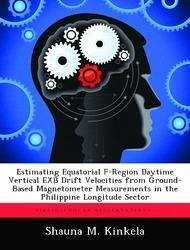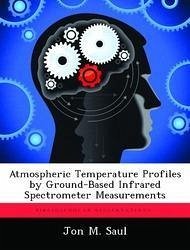Nicht lieferbar

Estimating Equatorial F-Region Daytime Vertical EXB Drift Velocities from Ground-Based Magnetometer Measurements in the Philippine Longitude Sector
Versandkostenfrei!
Nicht lieferbar
Ionospheric disturbances can severely impact Department of Defense (DoD) systems, such as radar, satellite, and navigation technologies. Forecasting disturbances and describing the Earth's ionosphere, in turn, relies upon innovative computer-based models that gather input parameters from ground and space-borne observations and empirical models for ionospheric drivers. Equatorial Exb drift velocities are significant input parameters that go into many ionospheric models, because they help describe vertical plasma motions near the magnetic equator. Previous work by Anderson, et al [2002] has demo...
Ionospheric disturbances can severely impact Department of Defense (DoD) systems, such as radar, satellite, and navigation technologies. Forecasting disturbances and describing the Earth's ionosphere, in turn, relies upon innovative computer-based models that gather input parameters from ground and space-borne observations and empirical models for ionospheric drivers. Equatorial Exb drift velocities are significant input parameters that go into many ionospheric models, because they help describe vertical plasma motions near the magnetic equator. Previous work by Anderson, et al [2002] has demonstrated the ability to derive Peruvian longitude sector, daytime vertical ExB drifts from ground-based magnetometer data. The present research extends these results to the Philippines using 56 days of magnetometer data from two stations in 2002. For each day of magnetometer data, corresponding Global Ultraviolet Imager (GUVI) 1356 airglow emission data from the evening equatorial anomaly were used to estimate the average ExBÅ drift velocities [Anderson, private communication, 2003]. These drift values were then compared statistically to the horizontal component of the Philippine magnetometer data for all 56 days. In this process, data were grouped according to F10.7 values. Overall, the best regression relation resulted from the ascending, April 2002 sample of 13 days of data (correlation coefficient of 0.63).











